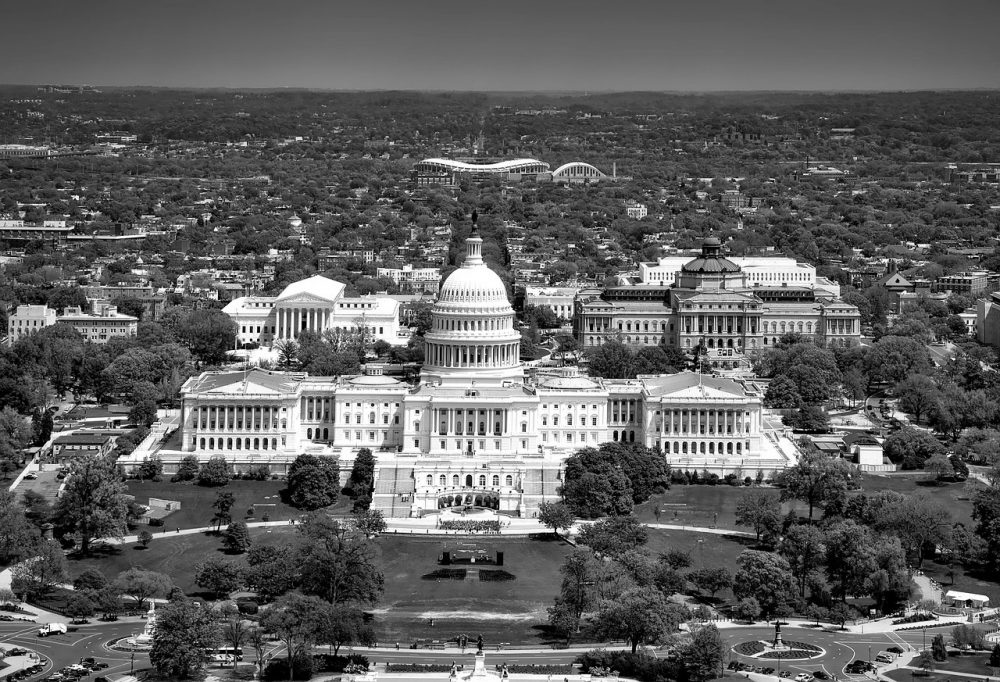12:45 PM Fed Chair Jerome Powell will address the Economic Club of Washington, D.C. Watch it live here.
7:00 PM Fed Vice Chair Richard Clarida will address the Money Marketeers of New York University on the “Economic Outlook and Monetary Policy.”
President Trump’s schedule (EST):
9:15 AM: Departs the White House;
1:45 PM: Arrives in McAllen, Texas;
2:10 PM: Participates in a roundtable on immigration and border security;
3:30 PM: Receives a briefing on border security;
4:40 PM: Departs McAllen, Texas; and
8:05 PM: Arrives back at the White House.
“White House Meeting Started With Sweets, but Quickly Turned Sour.” Last night’s Wall Street Journal article led with:
WASHINGTON—President Trump opened the latest face-to-face negotiations with lawmakers like he was comforting members of one of his golf clubs. He made sure everyone had coffee and offered snacks—Butterfingers, M&M’s and Baby Ruths.
But negotiations in the Situation Room of the White House ended abruptly when House Speaker Nancy Pelosi (D., Calif.) again refused to support money for a southern border wall. A frustrated Mr. Trump put his hands in the air—two open palms on either side of his face—and said, “Bye-bye,” and left the room, according to people familiar with the meeting.
The meeting, which lasted only about 20 minutes, was the latest tense exchange between Democratic leaders in Congress and the Trump administration, signaling that there was no solution in sight to end the lapse in federal government funding that stretched into its 19th day on Wednesday. The longest shutdown in U.S. history under current rules lasted 21 days in 1995.
“[Senator] Graham launches last-ditch push to end shutdown.” Last night’s Politico article led with:
Sen. Lindsey Graham is throwing a Hail Mary to reopen the government.
Graham brought together a half dozen Republican senators Wednesday afternoon in a last-ditch attempt to resolve the three-week stalemate before President Donald Trump deploys an explosive emergency declaration to build his border wall. The Republican senators were joined mid-meeting by White House emissaries Jared Kushner and Shahira Knight, the president’s congressional liaison.
Democrats were not invited to participate in the meeting, which largely comprised of centrist Republicans, including Sens. Rob Portman (R-Ohio) and Susan Collins (R-Maine). The participants emphasized that the discussions were preliminary in nature, but some of these senators are scheduled to meet Thursday with Senate Majority Leader Mitch McConnell to continue the discussions, according to congressional sources.
“He’s trying to do the same thing that all of us are trying to do, which is find a reasonable compromise on moving forward to securing the border and getting government reopened,” Portman said of Graham. But the senator said no specific proposal has emerged: “We’re still just talking.”
“House Democrats now asking questions about Treasury Secretary Steven Mnuchin.” Last night’s NBC report led with:
WASHINGTON — Treasury Secretary Steven Mnuchin has agreed to deliver a classified briefing to U.S. House lawmakers on Thursday on his recent decision to lift sanctions on companies linked to a Russian oligarch and Vladimir Putin ally, marking the start of an aggressive new focus on Mnuchin by newly empowered House Democrats, according to two top Democratic aides.
Financial Services funding bill passed the House, but the Senate won’t take it up. At 5:09 PM yesterday, on a 240-188 vote, with 8 Republicans joining 232 Democrats, the House passed H.R.264 to fund Treasury, the IRS, the Executive Office of the President, the judiciary, the District of Columbia, and independent agencies through September 30th. The bill is identical to what the Senate passed last summer, but Senate Majority Leader Mitch McConnell (R-KY) won’t take up any funding measures until President Trump and Democrats reach an agreement to end the shutdown. Today, by a similar margin, the House is expected to pass the Agriculture appropriation, H.R.265, and the Transportation-HUD appropriation, H.R.267, neither of which will be taken up by the Senate.
“Missing Government Data Make Job Tougher for Policy Makers, Traders.” This morning’s Wall Street Journal article led with:
The partial shutdown of the U.S. government is making it harder for Federal Reserve officials, investors, trade negotiators and others to read the economy at a critical moment.
Economic data produced by the Commerce Department’s Census Bureau and Bureau of Economic Analysis aren’t being released during the government shutdown; nor are some key data from other economic agencies. That meant no report Monday on national factory orders or Tuesday on the state of the U.S. trade deficit.
It could mean no report Friday on the federal budget deficit, and potentially next week on retail sales, business inventories and housing starts. It could mean no report at the end of the month on how fast the economy grew in the fourth quarter.
The reports help Fed officials and traders form views about how consumer spending, the housing sector, international trade and the broader economy are performing. Without the reports, those views are thus less informed and can lead to policy mistakes or market volatility.
“We’re going to get less data in real time,” Federal Reserve Bank of Atlanta President Raphael Bostic said in a speech Monday. “That will make it harder for us to do our jobs.”
“Fitch warns of possible cut to US triple-A rating if shutdown continues.” Yesterday on CNBC:
“I think people are looking at the CBO (Congressional Budget Office) numbers. If people take the time to look at that you can see debt levels moving higher, you can see the interest burden in the U.S. government moving decidedly higher over the next decade,” James McCormack, Fitch’s global head of sovereign ratings told CNBC’s “Squawk Box Europe” on Wednesday.
“There needs to be some kind of fiscal adjustment to offset that or the deficit itself moves higher and you’re essentially borrowing money to pay interest on the debt. So there is a meaningful fiscal deterioration there, going on the United States,” he added.
Speaking later at an event in London, McCormack continued: “If this shutdown continues to March 1 and the debt ceiling becomes a problem several months later, we may need to start thinking about the policy framework, the inability to pass a budget … And whether all of that is consistent with triple-A.”
“From a rating point of view it is the debt ceiling that is problematic,” he added, according to Reuters.
“Bank Economists Expect Slower Growth in 2019.” Yesterday’s press release (tables) cited an estimated 2.1% real GDP growth rate for 2019 and 1.7% for 2020, with a 20% chance of a recession starting in 2019 and 35% in 2020.
“Which States Rely the Most on Federal Aid?” Yesterday’s Tax Foundation map shows federal aid as a percentage of state general revenues for FY16.
“Tax Refund Claims: An Overview of the Joint Committee on Taxation’s Review Process.” By law, the Joint Committee on Taxation has a team of lawyers at the IRS who examine tax refunds in excess of $2 m. ($5 m. for C Corporations) as described in yesterday’s 24-slide presentation.
“The 2019 Outlook for Navy Shipbuilding.” Yesterday’s 26-slide presentation by Congressional Budget Office Senior Analyst Eric Labs reviewed the Navy’s plan for a 355 ship force, based upon this 29-page October 18, 2018 CBO report, which concluded:
If the Navy adheres to the schedule for retiring ships outlined in the 2019 plan, it would not meet its goal of 355 ships at any time over the next 30 years.
After releasing its shipbuilding plan, the Navy announced that it would extend the service life of its destroyers from 35 or 40 years
to 45 years and that it would extend the service life of up to 7 attack submarines from 33 to 43 years. With those service life extensions, the fleet would reach 355 ships in 2034 but would fall short of the Navy’s specific goals for some types of ships.
… CBO estimates that the total shipbuilding budget would average $28.9 billion per year, one-third more than the Navy’s estimate.







